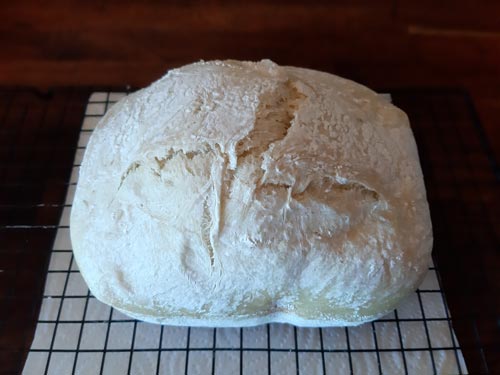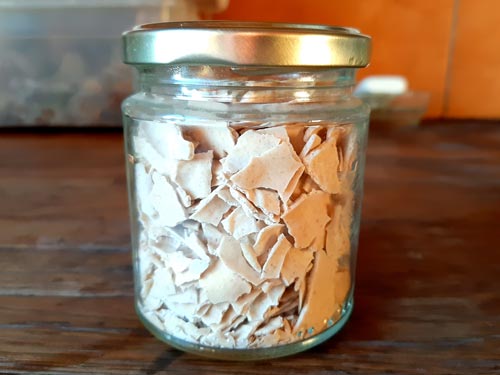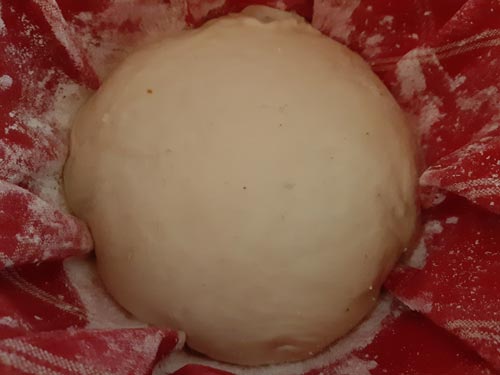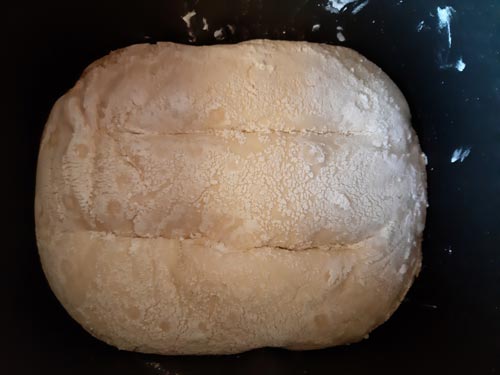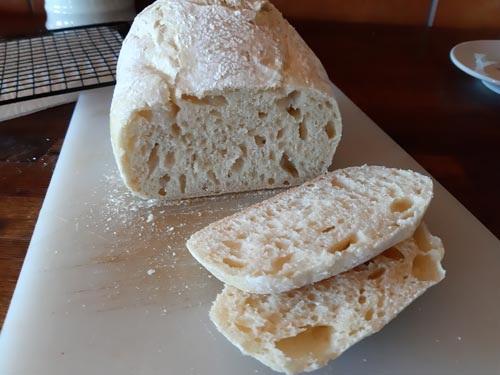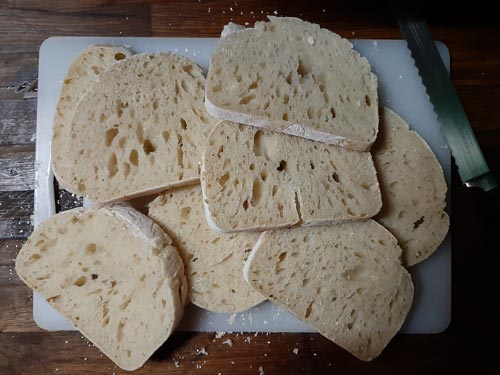MY SOURDOUGH LEARNING CURVE – UPDATED 25/9/2021
I’ve been making sourdough bread now for about a year now and today I think I’ve made my best loaf yet. Although I had originally been using 350ml water to 500g of flour, I’ve recently decreased the amount of water to 320ml and this seems to work better and the texture of the bread is not so gummy. The original proportions might work better in a conventional oven where there might be more evaporation, but I tend to bake the bread in a bread machine and these proportions seem to work better.
PREPARATION
The day before I am going to bake the bread, I take the sourdough starter out of the fridge at about 17:00 and leave it for a couple of hours to warm up.
I don’t want to have to throw any of the starter away and so I save the smallest amount possible to bake the next loaf. At the moment, I am saving back 60g.
I use rye flour (centeno) to feed the starter and add 60g flour and 60g of water to the starter. I transfer 60g to a new jar and put this back in the fridge. I then add another 15g flour and 15g water to the remaining starter and mix well. This is the starter for the next loaf and it should weigh approximately 150g. I leave this out on the worktop, wrapping it in a towel in the winter.
AUTOLYSING THE DOUGH
I have recently been experimenting with autolysing the flour overnight before mixing with the starter and this seems to work really well. Autolysing is basically mixing the flour and water together and leaving it for a number of hours for the gluten bonds to form. You generally leave white flour for around an hour and brown flour for about 4 hours.
At about 21:00, I weigh out 250g strong white flour, 250g brown flour, stir in 320ml water and gently knead the mix to bring in all the ingredients. I then cover the bowl with a plate and leave overnight.
ADDING THE STARTER
The next morning, I test the dough to see if it can make a window pane. I then sprinkle in 12g salt and 320ml water, mix well and leave for 60 minutes.
After 60 minutes, I stretch and fold the dough gently about 8 times and coil fold the dough about 4 times.
I do another 4 series of stretch and folds and coil folds every 30 minutes.
I then shape the dough into a ball, creating surface tension by pulling over and towards me a couple of times, turning the bowl as I go.
BAKING THE BREAD
I transfer the ball of dough into the breadmaker. I select the yoghurt cycle on the menu and time the breadmaker for 30 minutes.
After 30 minutes, I stop the machine and choose the bake cycle. On my machine, this takes 60 minutes.





